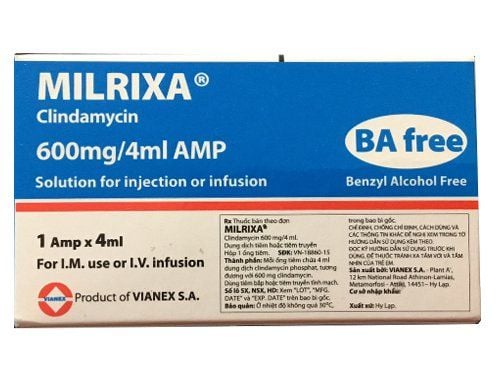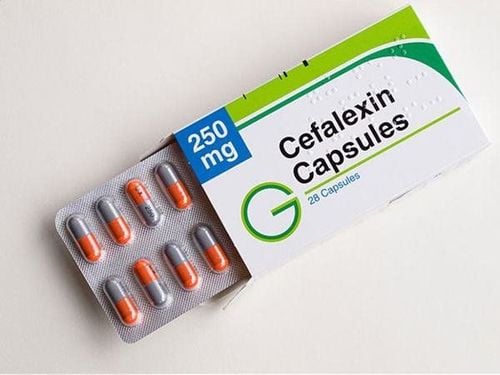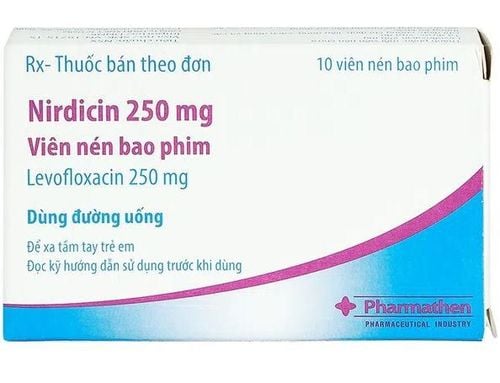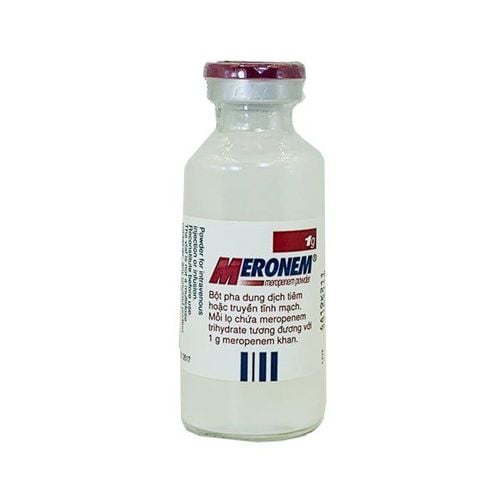This is an automatically translated article.
Laboya is a drug indicated for use in the treatment of lung, urinary tract, gynecological and some other infections. In this article, you can refer to some necessary information to know how to use the drug effectively and safely.
1. What is Laboya?
Laboya brand-name drug contains the active ingredient Meropenem Trihydrate 1g as the main active ingredient.
This active ingredient is known as one of the Carbapenem antibiotics, has an effective bactericidal effect similar to Penicillin through the mechanism of inhibiting bacterial cell wall synthesis. According to published research documents, the drug's spectrum of action is relatively wide, helping to promote its effectiveness against Gram-positive, Gram-negative, aerobic and anaerobic bacteria. In particular, the drug is stable to the hydrolysis of beta-lactamases secreted by most bacteria.
Specifically, the drug is active against Gram-positive bacteria mostly belonging to the genus Streptococci (which includes both secretory and non-penicillinase-secreting species). The activity of Meropenem contained in Laboya against Enterococcus faecalis is generally moderate to high. In addition, a number of prominent bacteria including Nocardia, Rhodococcus, and Listeria spp. were also evaluated as susceptible bacteria.
Laboya also promotes good activity against many Gram-negative bacteria such as typical Enterobacteriaceae including Escherichia coli, Haemophilus influenzae (including beta-lactamase-producing strains), Neisseria meningitidis, Proteus mirabilis, Klebsiella pneumoniae or common turned on is Pseudomonas aeruginosa.
Laboya is active against anaerobic bacteria such as Bacteroides spp., but not against Chlamydia trachomatis, Mycoplasma spp., fungi or viruses.
2. Indications and contraindications for taking Laboya
2.1. Indications for use of Laboya Laboya is an intravenous (IV) drug indicated in the treatment of infections in adults and children caused by one or more organisms susceptible to meropenem, including:
Patient pneumonia and hospital-acquired pneumonia. People with urinary tract infections. The patient had an intra-abdominal infection. People with gynecological infections such as endometritis along with some pelvic inflammatory diseases. Skin infections and skin structure infections, people with meningitis, bacteremia. In some cases, the drug is indicated for use when neutropenic fever is suspected of infection as monotherapy or in combination with antiviral or antifungal drugs. Concomitant use with other antibacterial drugs can be effective in the treatment of mixed infections. 2.2. Contraindications to use Laboya Do not use Laboya for patients who are sensitive to the active ingredient Meropenem Trihydrate of the drug. Contraindicated in people who are allergic to the active substance, any other Carbapenem antibacterial agents. Do not use in people who have ever had anaphylaxis, severe skin reactions) to any other type of beta-lactam antibacterial agent such as penicillin or cephalosporin.
3. How to use and dose Laboya
In order for Laboya to be effective, it is necessary to use the right dose and at the right time, always ensure that the drug concentration in the blood is within the allowable threshold.
Dosage and duration of treatment depend on the degree and type of infection and the patient's condition, so you can refer to the following:
* Reference dosage of Laboya for adults
Use of drugs in the treatment of pneumonia , urinary tract infections, or gynecological infections, Laboya should be administered at a dose of 500 mg Meronem intravenously (IV) every 8 hours. Use in the treatment of serious infections such as nosocomial pneumonia, peritonitis or suspected bacterial infection in patients with leukopenia, sepsis requires a dose of 1g intravenously (IV) every 8. Older patients. Age needs to be adjusted according to renal function or creatinine clearance, so the dose should be adjusted according to the dose prescribed by the doctor. * Reference dose of Laboya for children
Children 3 months to 12 years of age use Laboya at the recommended dose of 10-20 mg per kg of body weight every 8 hours. Dosage is adjusted depending on the severity and type of infection, the causative agent as well as the current medical condition. Children weighing over 50kg can take Laboya at the same dose as adults.
4. Side effects of taking Laboya
Laboya drug has the risk of causing some side effects for users such as:
The effect at the injection site is more common with problems such as inflammation, pain or redness. In some cases, thrombophlebitis may occur. Effects on the digestive system causing nausea, vomiting, abdominal pain, diarrhea or constipation or pseudomembranous colitis. Effects on the nervous system make patients feel tired, headache, may have convulsions. If side effects appear after taking Laboya, you should immediately consult your doctor, pharmacist and stop the drug if necessary.
5. Drug interactions
Do not use with Probenecid because there is often competition for active tubular secretion leading to inhibition of renal excretion of Meropenem. This, in turn, causes an increase in the half-life and plasma concentrations of the active ingredient Meropenem of Laboya.
Laboya can also reduce serum valproic acid levels, so patients need to be careful.
6. Be careful when using Laboya
Absolutely do not use Laboya for breastfeeding women without a doctor's prescription to avoid harm to young children. Patients with a history of allergy to penicillins should use caution when using Laboya because of the possibility of cross-allergies. Patients with liver failure need to be very careful and check their health regularly when taking the drug because it can affect bilirubin and transaminase levels. Above is some information about Laboya drug that readers can refer to. Because Laboya is a prescription drug, patients should not use it on their own, but need to contact a doctor or a qualified person directly to have a suitable prescription to ensure safety for health.













